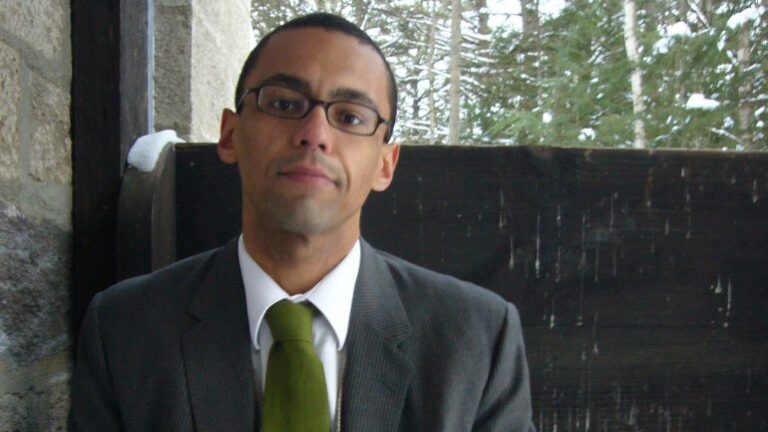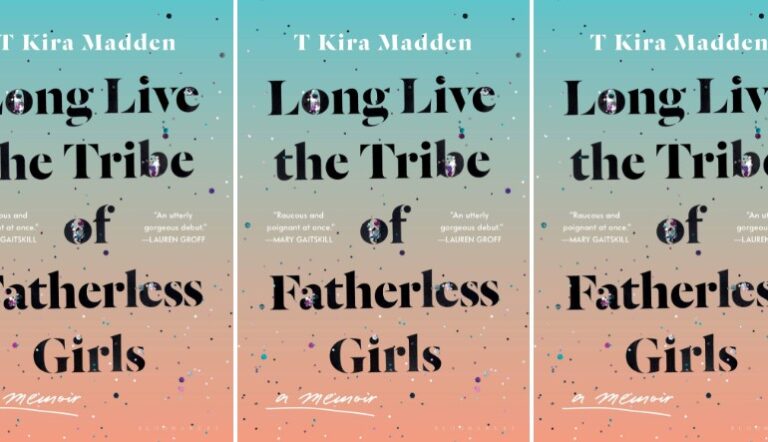A Transformative Act: Words Become Music—An Interview with Composer Eric Moe
Eric Moe will tell you that he writes music he enjoys playing, and I’m inclined to believe him. Moe is a pianist with a penchant for eclectic harmonies, provocative rhythms, melody lines that curl and cling to the listener’s ear. He’s also developed, over the course of a rich career, a kind of perfect pitch for incorporating text to music.
Moe himself wrote about this process in his essay “DFW + Me.” Here he describes the challenges of setting a difficult text, David Foster Wallace’s short story “Tri-Stan: I Sold Sissee Nar to Ecko,” to music—“I mean, from the composer’s point of view, why bother?”—and observes that a strong literary text doesn’t often appear to be lacking additional auditory components. But wait, Moe writes, “Music can also focus, heighten, and unify and thus can offer an inviting way into a text, by using music to provide additional layers of meaning, roll out a red carpet by giving the listener a persuasive interpretation, like a masterful actor.”
“Plus,” he adds, “it can sneak a firecracker of smartass irony in with a beautiful tune.”
Carolyn Ogburn: Thanks so much for talking to me. I’m glad this worked out, because I know you’re a voracious reader, not to mention composer. As a writer, I’m interested in the translation process between the text and musical setting. Is it like translation, do you think?
Eric Moe: I look at it as a highly wrought reading of the poem, like a performance of the poem, as if the poet herself or himself were reading the work. I know it’s not going to be the way the poet would actually do that, but the poet’s intention is very important to me. I spend a lot of time trying to figure out what the actual syntactic meaning of the thing is. I spend even more time trying to figure out what kind of musical matrix I want to put that in. Whether it can take repetition, whether words need to be spoken, how they’re projected . . . but the starting point is not just the meaning of the text. It’s also the structure. I know some people like to pull those apart, but I can’t really separate them from one another.
CO: How closely do you work with the author? Do you talk with the author about what their intention might have been, or is that a different process?
EM: I’d rather let the work speak for itself, and to make my own determinations about how I want [the text] to project. If I had to set a text and I really didn’t know what a person meant, I would ask the poet or author. But those are static collaborations. I’ve also done more active collaborations. For example, when I worked with David Foster Wallace (on the one-woman opera/situation-tragedy Tri-Stan, an adaption of Wallace’s short story) that was more active. I had to work with him on making various cuts, and streamlining certain aspects of the text. And working with my librettist [Rob Handel] on the opera, Artwork of the Future, we went through a lot of rewrites, many of which were prompted by me. And so, I feel like I was pretty actively involved—very actively involved—in the creation of that libretto.
Another thing I did one time was that I actually commissioned—or, well, “subcommissioned”—the poet Denise Dumahel to write a libretto. I’d created a scenario that followed the trajectory of a Brittney-Spears-like character (a monodrama called JOZAPHINE FREEDOM) and Denise wrote a series of poems connected with dialogue.
CO: So what are those things, qualities, that when you find them on the page, something inside goes: “Ah. This.”
EM: Usually what happens is, if I really like something, I ask myself: how would this work, for a musical setting? The question is always lurking…
And then there are some things that I know that I just really, really want to do. For example, I came across this poem by Matthea Harvey, it’s called “Baked Alaska, a Theory Of” and it’s a fantastic poem, with all these musical possibilities embedded in it. Like, there’s a country-western song at one point, and so when I got a commission from a choral ensemble in San Francisco and I thought, here’s my chance! That’s when I wrote “O the flesh is hot but the heart is cold,” which is a line from the poem.
CO: So, you hear things within the text, maybe you want to amplify them, but do you ever find yourself wanting to work against the text? Undercutting whatever that is you’ve found within the text?
EM: Well, you’re commenting on the text, which would be one way of looking at it. You’re both projecting it, and commenting at the same time.
CO: I guess any performance of the poetry, in any medium, is a commentary…
EM: Yes, I think so. A commentary, and a restructuring of it. I mean in our culture, it’s putting it into an aural (or, you know, an oral experience, depending on which side of it you’re on). In our culture, so much of our experience with literature, poetry, is through written text. And that certainly wasn’t the case in the past, even the fairly recent past. And I think that it’s a shock when people hear things out loud, often. And so it’s a transformative act. It’s a translation of it from the page. Of course there’s some poetry that doesn’t work at all off the page—although, for instance, E. E. Cummings gets set a ridiculous amount!—But there are other poets whose work wouldn’t work off the page at all, because of the typography, the matrix. But when poems like that are set, you’re simply replacing the matrix of the page, the ecosystem of the page, with a musical ecology, a sound ecology.
There’s an age-old debate about words or music: which should be more important in a text setting? And one of the things that fascinates me, is that words themselves have sounds. When you set a text to music, you’re combining two modes of communication, one of which, in speech is very dependent on timbral streams of information. So if I say something in a monotone, don’t vary the pitch at all, and even if I can do it arhythmically, I become harder to understand but I am still intelligible because you’re hearing all of the little timbral changes in the voice. Conversely, when you have a singer, particularly someone with a trained voice, you may have no idea what they’re singing, what the words are, but it can still be a very enjoyable experience. I love the tension between all of those things, and getting all of that to work out.
CO: Have you ever used words purely as texture, where the instrumental component is primary, overriding the meaning of the words?
EM: Well, if it’s a piece I really like, no, I do my best to preserve the words and to make sure they’re intelligible and to follow the contours as if they were spoken. To make them more comprehensible. That said, there are also lots of things in normal speech that are not words. I even wrote a whole electro-acoustic piece about that called “Mouth Music” in which I recorded a lot of people, and I took out all the things that weren’t words, and made a piece out of them. All the umms and ers, the laughter, all the things that convey meaning that are not words.
And in a choral piece, where the whole texture has to be generated from the words, there are background and foreground elements; I can take bits of the text and turn them into accompaniment figures. If you repeat words often enough, they have no meaning at all.
—Photo: Mara Rago


